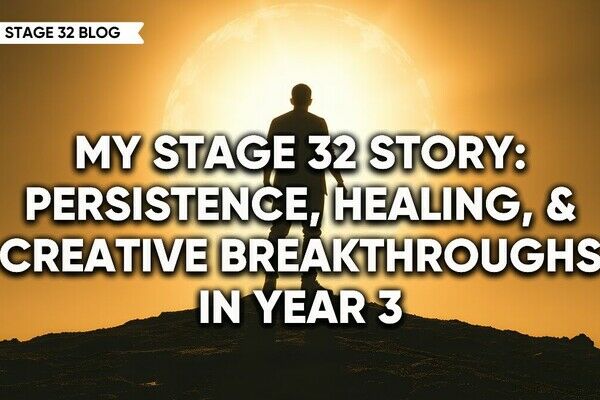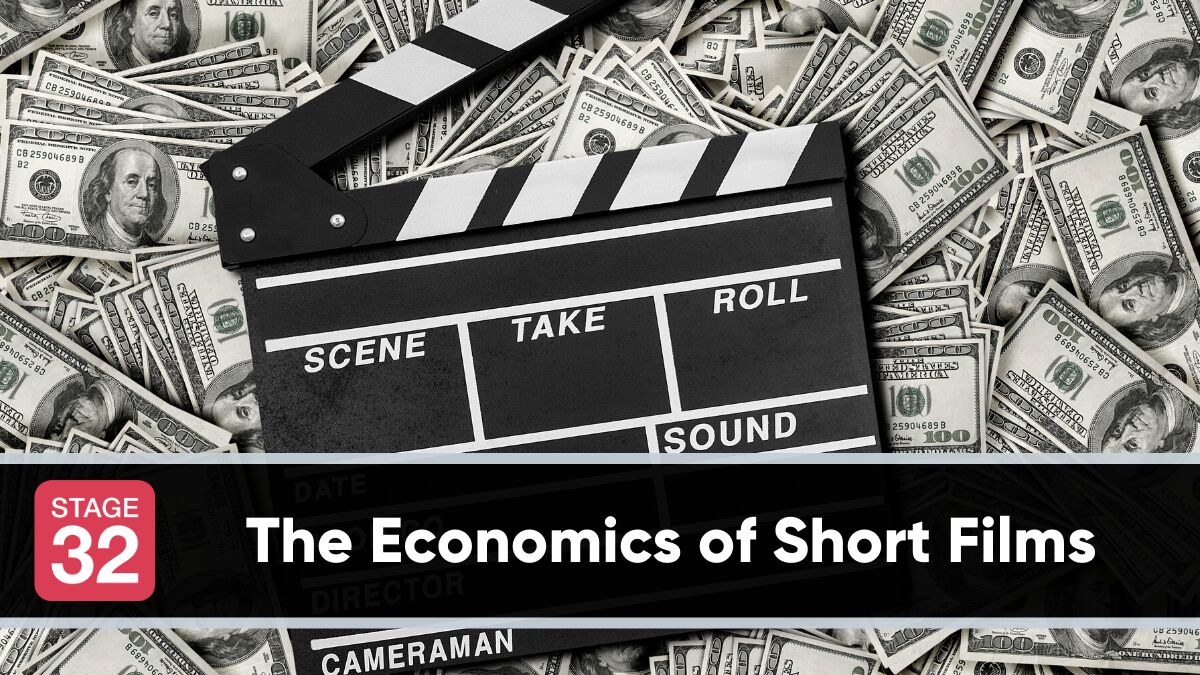The Economics of Short Films
You’re a filmmaker, a writer, a director, maybe even an actor. You want to keep working, but the phone’s not ringing so… you decide to shoot a short film.
Before you start down the rabbit hole you may want to ask a few questions.
Why do I want to shoot a short film?
What resources do I have at my disposal?
What resources will I need to obtain?
And the most impactful question: What’s it going to cost?
Anyone who has ever taken on the challenge of shooting a short knows that there are as many paths to completion as there are roads on Google Earth.
Can you shoot a short film for almost zero money?
Can you still get the quality you want if you don’t have funds to pay for talent, crew, equipment?
Is there a way to recoup the money that you spend?

Where to Begin
Let’s start at the beginning, why do you want to make a short film?
There are a few compelling reasons to want to shoot a short. They are, in no particular order:
- You’re a director who wants a calling card to show off your talent
- You’re a writer who has an idea that is perfect for shorter content but won’t stretch into a feature
- You’re a producer looking to shoot a “proof of concept” for a longer project
- You’re a performer hoping to get footage for your reel
Certainly, the most common reason for shooting a short film is as a calling card for a director. For our purposes, we are going to examine this scenario from different budget perspectives.
The one thing that every content creator should understand is that more time generally leads to better quality. Thus, shooting in ten days will give you more time to frame your shots, perfect your lighting, allow for camera movement, improve choreography, and give you more time to work with your talent.
So, let’s assume you have a ten-page short screenplay. That the film is shot in several locations, and that it has eight speaking roles and a few scenes that will require extras. The first thing you would want to do is break the script down to determine how many days you’ll need to shoot to get your vision from the page to the screen.
There are a great number of factors that will affect that bottom line. How quickly can your crew move from one location to the next? How many hands (crew members) will there be assisting? How fast can your director of photography and/or gaffer set up and break down the sets/lighting?
Next look you will want to decide if this will be a SAG-AFTRA shoot or non-union. There are clear advantages and drawbacks to working with any union in the world of entertainment.

Union or Non-Union, is that the Question?
Most working actors in LA will be in SAG-AFTRA. Being a union member isn’t a guarantee of talent, but it’s certainly one indicator, and certainly, if you intend to use any recognizable actors for your short they will be a union member.
Under the SAG-AFTRA short film contract rates are negotiable, but ultimately, they expect the actors will be paid a minimum of $125 per day and 19% in pension and health. That money can be deferred, but you will have to pay should the film ever make money. In addition, you have to adhere to all work rules. That includes overtime, meal penalties, turn-around penalties, travel, etc.
One other major drawback of dealing with the union is the advance time required. You should start the process of your project becoming a signatory six to eight weeks in advance. In theory, if your paperwork hasn’t been approved by the guild you cannot start to shoot. The bottom line, if you wish to be a SAG-AFTRA short film you need to prepare well in advance.
So, let’s continue with your 10-day shoot. You’ve decided to go with the SAG-AFTRA contract, and all of your actors have agreed to defer their pay. Great! Your cost upfront for talent is zero. As the director, you’re paying yourself zero. So far, so good, BUT what about the crew?

Can you Get away Without Paying the Crew?
The answer to that question is complex. Some young filmmakers just want to work and don’t care about getting paid but that may not be true in every position. In my experience, you can find eager participants in all but a few departments: Make-up and Sound. Often those folks will want to be paid.
In general, if you pay some of the crew, you may want to pay all of the crew. You don’t want to create the impression of a second class among your team members. You want everyone pulling in the same direction. How little can you get away with?
You can pay any crew member the legal state/federal minimum wage. That varies from place to place, but currently, I budget crew members at $12 an hour for a ten-hour day and offer time and a half from ten to fourteen hours. That means your crew is going to be getting a minimum of $120 per day.
Another variable that you want to consider is the size of the crew. Small crews will save you money in salary but will cost you money in time. A larger crew can be working on company moves, setup, breakdown faster.
And then there’s food. Yes, you need to feed everyone on the set. There should be a craft service budget, a lunch budget, and a dinner budget. Even If you never go into a dinner time shoot you’ll still need to budget that just in case.
What does the food cost? Here again, there are big variables. Do you have a friend or a spouse who can cook? Can you get a deal with a local restaurant to provide meals for a discount? Can you barter with a café for a break on price in exchange for a shoutout in the film?
For this first scenario, let’s assume that you’re going to spend $8 per person on breakfast, $15 for lunch, $20 for dinner. On top of that, you’ll want to put aside $100 per DAY for craft services – including bottled water for the cast/crew. You can see how the number of days will greatly impact the cost of food as well as any rentals and payroll.
Next, you want to consider your equipment. What will you be shooting with? An Arri Alexa, Red Dragon, Sony F7, or an I-phone? What will your lighting and grip package consist of? Many filmmakers can get by with a three-light setup, but it won’t always be the same three instruments. You’ll also want C-stands, filters, flags, apple boxes, etc.

Poster for a Short Film I Produced "Murray Ghost"
Cut Corners but Not Quality
Many of the rental houses are happy to work with filmmakers working within a tight budget. You can often get a weekend rental for the price of a single day. That gives you three and a half days to shoot for the price of one. Keep in mind that any “extras” you may want will most likely cost you money. By way of example, if you need a crane shot, or an automated slider be prepared to pay for those shiny objects.
Can you cut down on the price of cameras, grip, and lighting? Possibly. How? Do members of your crew have lenses or cameras? Do they have their own grip or light package?
On my last short film shoot, I rented a Black Magic cinema camera with a set of prime lenses, but two of my crew members had the same camera and we ended up using all three.
Cost vs. Benefit
In our fictional scenario, we’ve decided to pay the cast rather than defer, we’re going to rent a camera, sound equipment, and lights for the full shoot, and we will presume that we will have to pay for meals without any donations or discounts.
Very quickly the shoot’s budget escalates:
- Site rentals
- Insurance (necessary)
- Payroll – actors
- Payroll – crew
- Grip & Electric rentals
- Camera Rental
- Food
For a ten-day shoot, you could easily spend $25,000 or more (much more)
Other items that you may want and need for your production may include:
- A jib or crane
- Steady-cam
- Transportation (van or truck)

What about post-production? What about music? Will you hire an attorney to review contracts and assist with distribution negotiations? Should you?
With all of the bells and whistles, your short comes dangerously close to rising above the SAG-AFTRA short film ceiling. When you cross that line, the option to defer and negotiate your actors' pay is no longer available, you must pay the actors in full.
Can you find a way to lower the cost without compromising quality? Sure, you can. Some of the methods of doing so were previously mentioned, but let’s take another look.
Defer the actors' pay. Just remember that doesn’t include turn-around, meal penalties, overtime. So, make sure you board your shoot with enough buffer to avoid those costs.
Get crew members that have their own equipment. Pay them minimum wage, or ask them to defer along with the actors.
Shorten the schedule. If you can move quickly enough to shoot 4 pages a day you can shoot your film over a long weekend and pay a single-day rental for camera, grip, lighting. Shortening the schedule lowers the amount you’d have to pay the actors if/when money comes in. It would also significantly lower your location fees, food and craft services bill.
Using those tactics, you can cut the budget significantly. A shoot that would have cost $40,000 can be done for a fraction of that.
Just keep in mind that with less time you need to move faster and in doing so you risk losing some of the production value, the quality of the performances, and the ability to shoot until you’re satisfied. You may have to go with whatever you get.
This brings us back to why. Ultimately, unless you’re shooting for your own amusement, and there’s nothing wrong with that, then you MUST pay attention to quality. As a filmmaker, you have to carefully balance the budget restrictions with how they may affect the end product.
In the final analysis, it doesn’t matter if you spend $100 or $100,000 to create your vision. A great $100 short will do more for you than a poorly executed $100,000 short.
Think of what you want to accomplish. If it is a directorial calling card then you’ll want to show off your craft with the camera, and the actors. If you are using the short as a proof of concept, you’ll want to capture an exciting moment that captures the tone of your longer property and shows off the writing.

Recouping your Investment
Can short films make money? Absolutely! Is it LIKELY to make money? Sadly, no. But there are ways to monetize your movie.
When you have finished your short you can submit it to festivals, but what else? Where can you film find an audience? Youtube, of course. Vimeo perhaps. Social media platforms like Tik-Tok, but some of the streaming services are looking to fill short slots with content as well.
Here is a link to a video available on Film Courage on the subject of making money with short films.
And an article from Indie Film Hustle’s Alex Ferrari.
If your goal is to make a profit focus on marketing and don’t wait until the film is out. Start raising awareness during pre-production.
A few resources:
- Here’s a link to Raindance’s international list of short film buyers
- Here’s a link to the short film contract from SAG-AFTRA
- This is a link to the New York Film Academy’s article on selling your indie to Netflix, Hulu & Amazon
- And finally, here’s a link to The Film Fund’s article about short film platforms to get your short seen:
Find the balance between the resources you have, those you want, and how your script will be executed and you’ll have a piece that you can be proud of.
About Brian Herskowitz

Brian Herskowitz is the CCO of the newly formed Horror Equity Fund. An exciting, innovative platform designed to help the Independent horror film maker finance their projects through an SEC compliant equity internet based funding platform.
As a writer, Brian has completed well over a dozen feature films. His first screenplay KAMI HITO E (THE THIN LINE) was based on his experience as an international Judo champion training in Tokyo. From there he continued to write and his first produced feature was a low budget slasher titled DARKROOM.
He wrote and directed the award winning short film ODESSA OR BUST starring SEINFELD’S Jason Alexander, ACADEMY AWARD WINNER Red Buttons, and RUSHMORE’S Jason Schwartzman. Brian wrote, directed, and produced the documentary 1736: SOMEWHERE TO TURN – about a family crisis center for domestic abuse victims, and the short film JOANNE - the story of a woman going through hard economic times and a mid-life crisis.
Brian recently took on the duties of Voice Director for the new Animated Children’s series ANNIE SUNBEAM produced by Debbie Margolis-Horwitz.
Let's hear your thoughts in the comments below!
Got an idea for a post? Or have you collaborated with Stage 32 members to create a project? We'd love to hear about it. Email Taylor at taylor@stage32.com and let's get your post published!
Please help support your fellow Stage 32ers by sharing this on social. Check out the social media buttons at the top to share on Instagram @stage32 Twitter @stage32 Facebook @stage32 and LinkedIn @stage-32
| Behind the Scenes of Acting, Stunts and Directing with Jackie Chan and Major TV & Film Projects |
| Announcing the 2nd Annual New Voices in Animation Screenwriting Contest |
Search Stage 32 Blog
There are now 4042 blog posts for you to enjoy. Search them all by tags below.
Acting, Advice, Cinematography, Coffee & Content, Composing, Contests, Distribution, Featured, Filmmaking, Financing, Inspirational, Networking, Producing, Screenwriting, Success Stories, Tips, Trending,Relevant Tags
Recommended Articles

Stage 32 Is My Magic Key To International Networking And Education

A Practical Guide for Actors: Tips & Advice Every Performer Should Know

Find Your Footing on Stage 32: Join Our December Community Open House

What Stage 32's Community Is Really About (Beyond Scripts, Sets, and Showreels)

Happy Thanksgiving From Stage 32: We Are Thankful For YOU

How to Get Help from Stage 32: Meet the Teams Behind the Scenes

7 Life Hacks For Creatives

Insider Intel: 2025- Your Year of Breakthroughs (+ What's Coming in 2026)

My Stage 32 Story: Persistence, Healing, & Creative Breakthroughs in Year 3






